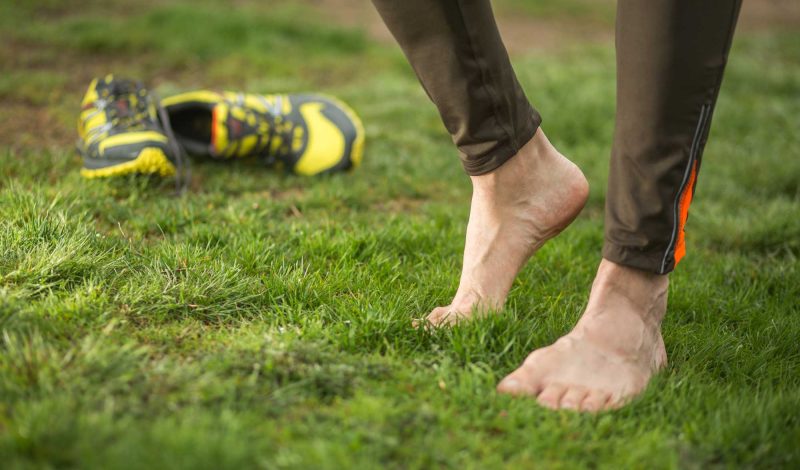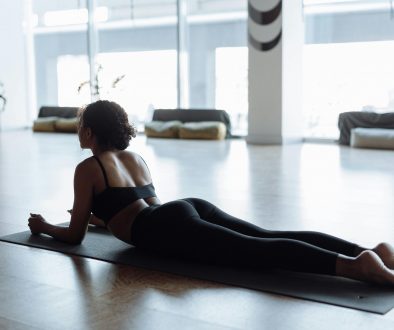Barefoot Shoes
Chiropractor – Alex Broomsgrove, talks about barefootshoes
Are bare foot shoes just a trend or is there actually something in the barefoot movement?
As a chiropractor, most people who come into my clinic, come in with the perception that they need a supportive shoe to help with their foot or lower back pain. But is that really the case? It is a subject that divides public and professional opinion alike.
The barefoot or ‘minimalistic’ style of shoe is gaining a lot of traction and is essentially a style of footwear that provides much less support, whilst allowing as much natural foot motion as possible, and recruitment of various foot muscles- quite the opposite of a typical modern day shoe.
Some people even ask- should we be wearing shoes, or rather simply a covering to protect from the elements? The foot is a fantastic piece of engineering and if we wear shoes or trainers, then which ones are the best ones? Do you require more pronation, or supination of the foot? Should your amount of pronation (inward and downward motion of the arch) determine the type of shoe or trainer you should wear? A Supportive or minimalistic shoe?
The list of questions goes on. As a practitioner I need to sift through the different studies, reports, other expert opinions and anecdotal evidence to tell my patients the best advice on the subject. From what I learnt through my studies at university to become a chiropractor, it really is common-place for patients to lack the required foot strength to promote proper mechanics through the foot and ankle. One of the best ways to develop foot strength is by spending time barefoot, in order to activate and stimulate the muscles. This is all well and good when you do not have any significant mechanical problems with your feet, but it can be challenging to make this transition or to spend more time without support if you have always relied up it in the form of arch supports, or chunky trainers with extra absorbent sole.
The foot
Let’s talk about the foot itself. The human foot consists of twenty six bones, nineteen muscles, thirty-three joints and one-hundred and seven ligaments. On top of all that you have around seven thousand nerve endings in your feet. So, as you can see there are lots of different components that make up the human foot, all with their own individual roles. An average day of walking can bring around a force equal to several tonnes of pressure through the feet. http://www.bridgewater.nhs.uk/wp-content/uploads/2012/11/Foot-Facts.pdf
The foot is made up of tarsal bones, metatarsal bones and phalanges. Your tarsals are a group of seven bones, around the back portion of the foot. Your Metatarsals are made up of a group of five long bones (in the mid foot). Then you have your phalanges, which are the bones that make up the toes in the foot.
With all of the above in mind, it is important to take care of your feet. One of the ways in which you can do this, is by improving your foot strength and tone. There are few ways to try and achieve this, one being specific rehabilitation exercises that can be prescribed by a chiropractor or other health care specialist; the other is to consider the role that barefoot shoes have to play.
Barefoot shoes
Barefoot shoes claim to be able to help improve your foot strength and mobility. According to Vivo barefoot, one of the leading providers of barefoot shoes, the first shoes were worn over 40,000 years ago. It is thought that these “early version of shoes” were made from animal skin, and used to protect the feet of early humans. It’s considered that a set of wide, thin soled “shoes” provided protection from the cold, or sharp thorns and objects on the ground, whilst hunting and gathering.
Now we all have the idea that modern footwear focuses on shock absorption and motion control. Modern shoes or trainers have developed new technologies to assist in improving shock absorption and over time, soles have become thicker, and the foam and materials used have become better at absorbing shock- but why do we require such technology when many of us are so sedentary and just walk from place to place?
According to the Vivo-barefoot website, new footwear technology has been an ongoing development for over 60 years. Despite this there is still no substantial evidence that any of these new technologies or developments reduce injury rate. It is suggested that our feet react to the softer soles and surfaces provided by modern, supportive footwear, by actually reducing the natural shock absorption mechanics within our own body- the opposite to what we require! However, a minimalistic shoe with less heel support has been shown to improve the gait mechanics and make the body work in a naturally more shock absorbent way, by means of using various muscles and joints to greater efficiency in order to do so. The ‘heel strike’ is a good example of this- have you noticed how hard your heel strikes the ground in normal trainers, but when walking barefoot you naturally tend to land the heel more gently and with more control?
The idea behind the barefoot shoe or minimal shoe is to try and actively recruit the muscles in your feet, legs and hips (including the gluteals). The theory is that the less supportive the shoe, the more the muscles in the foot have to work, in turn training and developing more muscles in other parts of the body. For years now, companies have been developing new designs to enhance shoe performance, but the barefoot trend/movement is going against the grain in this case. In 2009 a book called “Born to Run” was published. This book added to the barefoot running debate, supporting the barefoot theories. The premise of this best-selling book, is that a journalist called Christopher McDougall, who suffers with a foot injury-finds that the only way he managed to improve his foot pain was through foot rehabilitation and strength training. Through the book he then takes up running further and further distances to train for an ultramarathon race. In the book he comes across a native Mexican tribe called the Tarahumara. It turns out that the Tarahumara run a lot around the Copper canyons in Mexico. According to the Born to Run book, the Tarahumara are known to run around 40 miles in a day, either barefoot or with sandals made from cut out from car tyres that are thrown down the canyon.
On balance, there is still very little or poor evidence either side of the argument and it is usually a coaches’, or health professionals’ anecdotal point of view with regards to recommendations for making changes to a more minimalistic type of footwear. As stated at the beginning of the article, it makes sense to me, as a chiropractor, that it is important to train the muscles in your feet like any other muscle, in conjunction with other forms of strength training. Feet can benefit from a combination of balance (proprioceptive) and movement control type exercises. Having made the transition from more modern supportive shoes I can certainly feel the difference in terms of balance, better posture, less injury rates.
The key question here is would you benefit from a minimalist type of shoe? Without sitting on the fence, the answer is…. “it depends”. Each individual case is different, everyone has their own needs. The context of your health/fitness levels combined with the demands you want to put on your body will determine which shoe might be better for you. Also, some foot types because of the amount of previous load throughout a lifetime, as well as certain foot abnormalities may not actually lend themselves to this sort of change, so it does need to be a considered choice.
Whilst writing this article I am currently trying out two new pairs of shoes from Vivo-barefoot to put them to the test. I have a pair for clinic/office work related tasks and a pair for training and running outdoors, both with a minimal sole thickness, which both allow maximum foot mobility. Later on, I will be writing a follow up on my experience with this specific style of shoe, as there are plenty of options available.
If you are thinking about how a minimalist type of shoe may benefit you, whether it is for day to day life or for some specific training, then we do suggest you consult with our specialist physiotherapist, or one of our chiropractors at Skelian. We will always examine your foot type and general mechanics, so that we can give you the correct, tailored advice.
If you would like more advice or would like an assessment with one of our health care professionals please contact the clinic via email at stpauls@skelian.co.uk or call our reception team on 01242 254000.
References
https://www.vivobarefoot.com/uk/science
http://www.bridgewater.nhs.uk/wp-content/uploads/2012/11/Foot-Facts.pdf
https://www.chrismcdougall.com/born-to-run/
https://www.ncbi.nlm.nih.gov/pmc/articles/PMC5530119/
https://bjsm.bmj.com/content/50/8/481
https://www.ncbi.nlm.nih.gov/pubmed/15549097
Links
https://www.instagram.com/skelian_chiropractic/
https://www.facebook.com/skelianclinic/
https://www.youtube.com/channel/UCCJ9BXYUAAfOie7zTUUeIKA/videos





